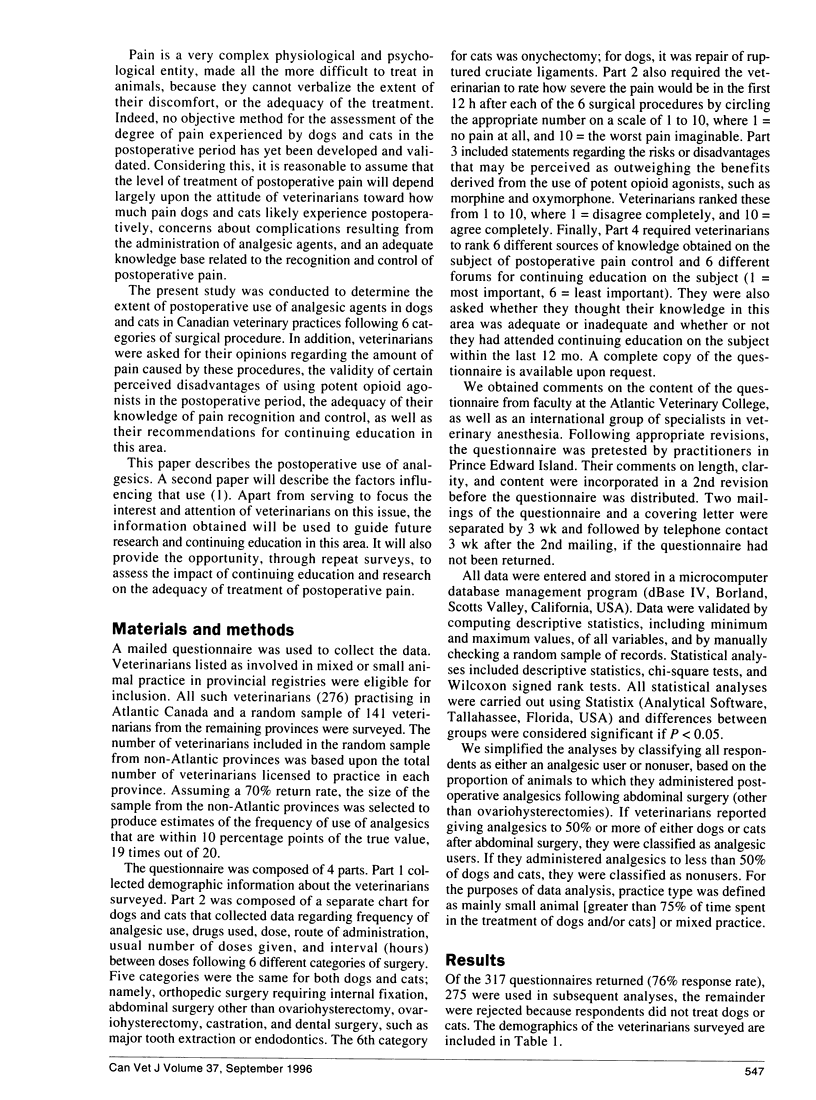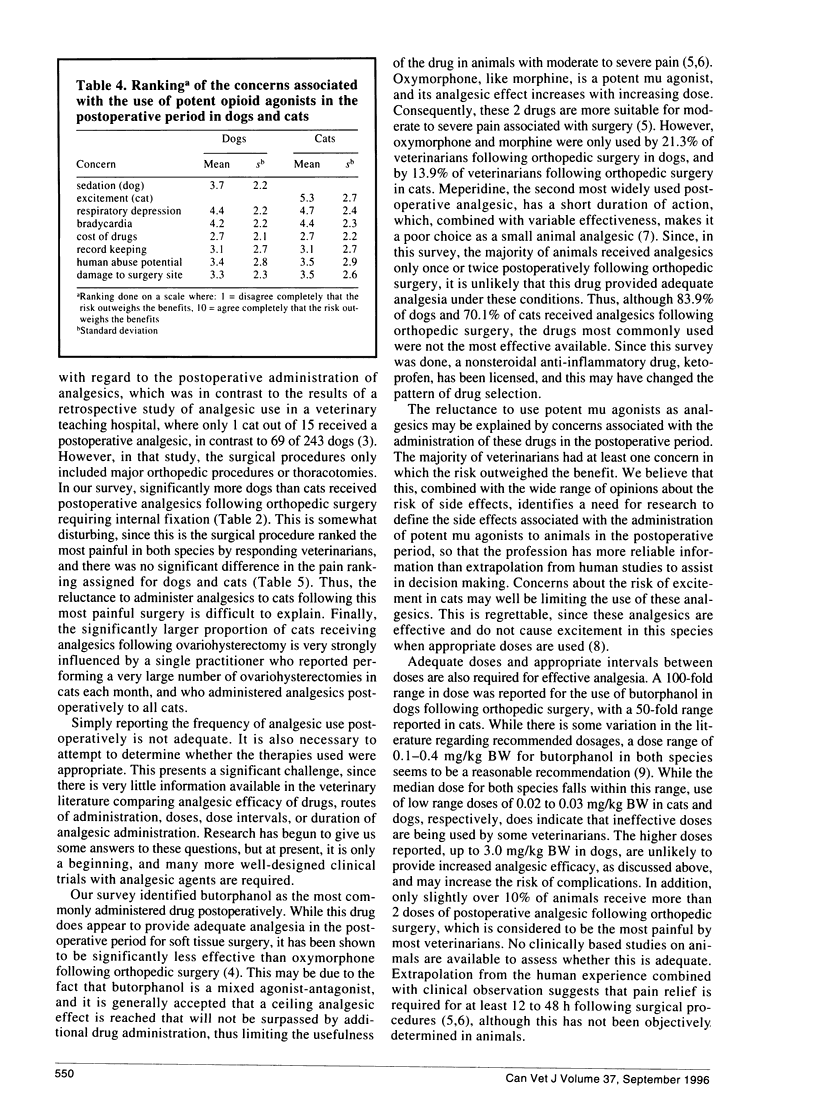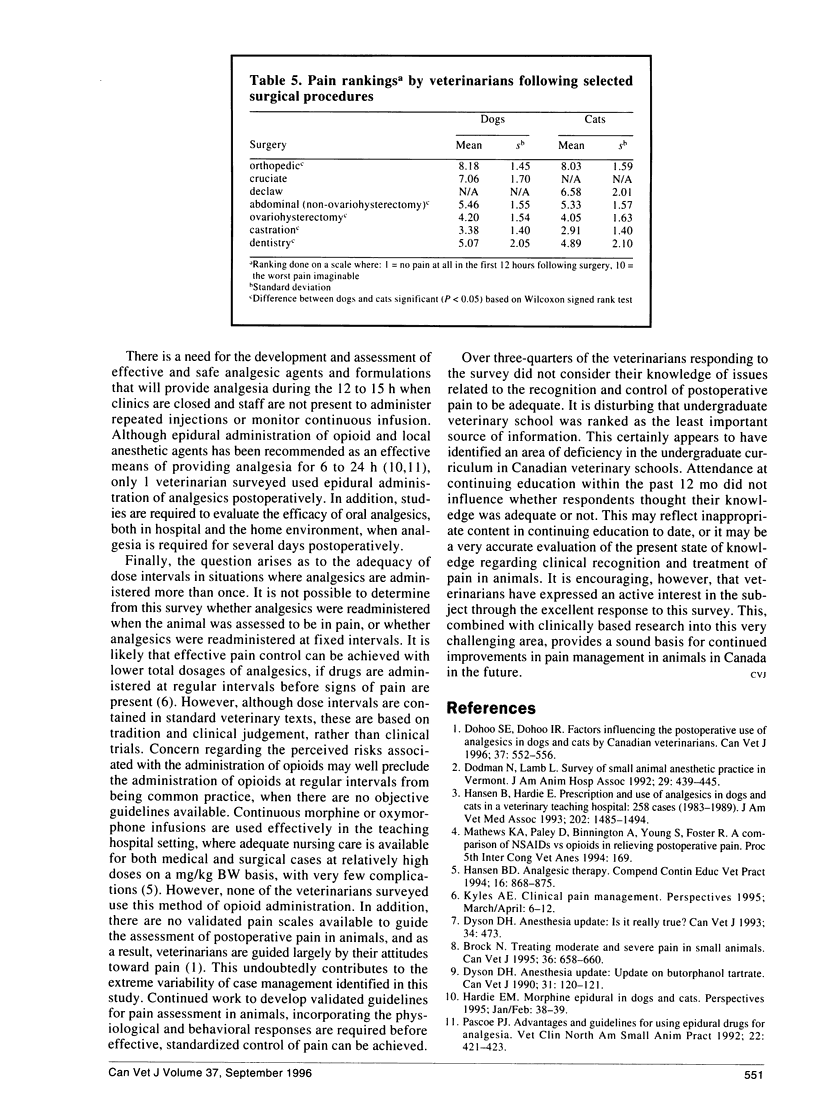Abstract
Four hundred and seventeen Canadian veterinarians were surveyed to determine their postoperative use of analgesics in dogs and cats following 6 surgical procedures, and to determine their opinions toward pain perception and perceived complications associated with the postoperative use of potent opioid analgesics. Three hundred and seventeen (76%) returned the questionnaire. The percentage of animals receiving analgesics postoperatively ranged from 84% of dogs and 70% of cats following orthopedic surgery to 10% of dogs and 9% of cats following castration. In general, with the exception of orthopedic surgery, roughly equal percentages of dogs and cats received postoperative analgesics. Opioids were used almost exclusively to provide postoperative analgesia, with butorphanol the most commonly administered drug to both dogs and cats. Analgesics were usually administered either once or twice postoperatively. With regard to the administration of potent opioid agonists, the 3 major concerns included respiratory depression, bradycardia, and sedation in dogs, and excitement, respiratory depression, and bradycardia in cats. Seventy-seven percent of veterinarians considered their knowledge of issues related to the recognition and control of postoperative pain to be inadequate. Experience in practice is currently the major source of knowledge, with undergraduate veterinary school and research articles in journals ranked as the least important sources. Lectures or seminars delivered at the regional level were the preferred format for continuing education.
Full text
PDF





Images in this article
Selected References
These references are in PubMed. This may not be the complete list of references from this article.
- Brock N. Treating moderate and severe pain in small animals. Can Vet J. 1995 Oct;36(10):658–660. [PMC free article] [PubMed] [Google Scholar]
- Dohoo S. E., Dohoo I. R. Factors influencing the postoperative use of analgesics in dogs and cats by Canadian veterinarians. Can Vet J. 1996 Sep;37(9):552–556. [PMC free article] [PubMed] [Google Scholar]
- Dyson D. H. Is it really true? Can Vet J. 1993 Aug;34(8):473–503. [PMC free article] [PubMed] [Google Scholar]
- Dyson D. H. Update on butorphanol tartrate: use in small animals. Can Vet J. 1990 Feb;31(2):120–121. [PMC free article] [PubMed] [Google Scholar]
- Hansen B., Hardie E. Prescription and use of analgesics in dogs and cats in a veterinary teaching hospital: 258 cases (1983-1989) J Am Vet Med Assoc. 1993 May 1;202(9):1485–1494. [PubMed] [Google Scholar]
- Pascoe P. J. Advantages and guidelines for using epidural drugs for analgesia. Vet Clin North Am Small Anim Pract. 1992 Mar;22(2):421–423. doi: 10.1016/s0195-5616(92)50657-x. [DOI] [PubMed] [Google Scholar]





